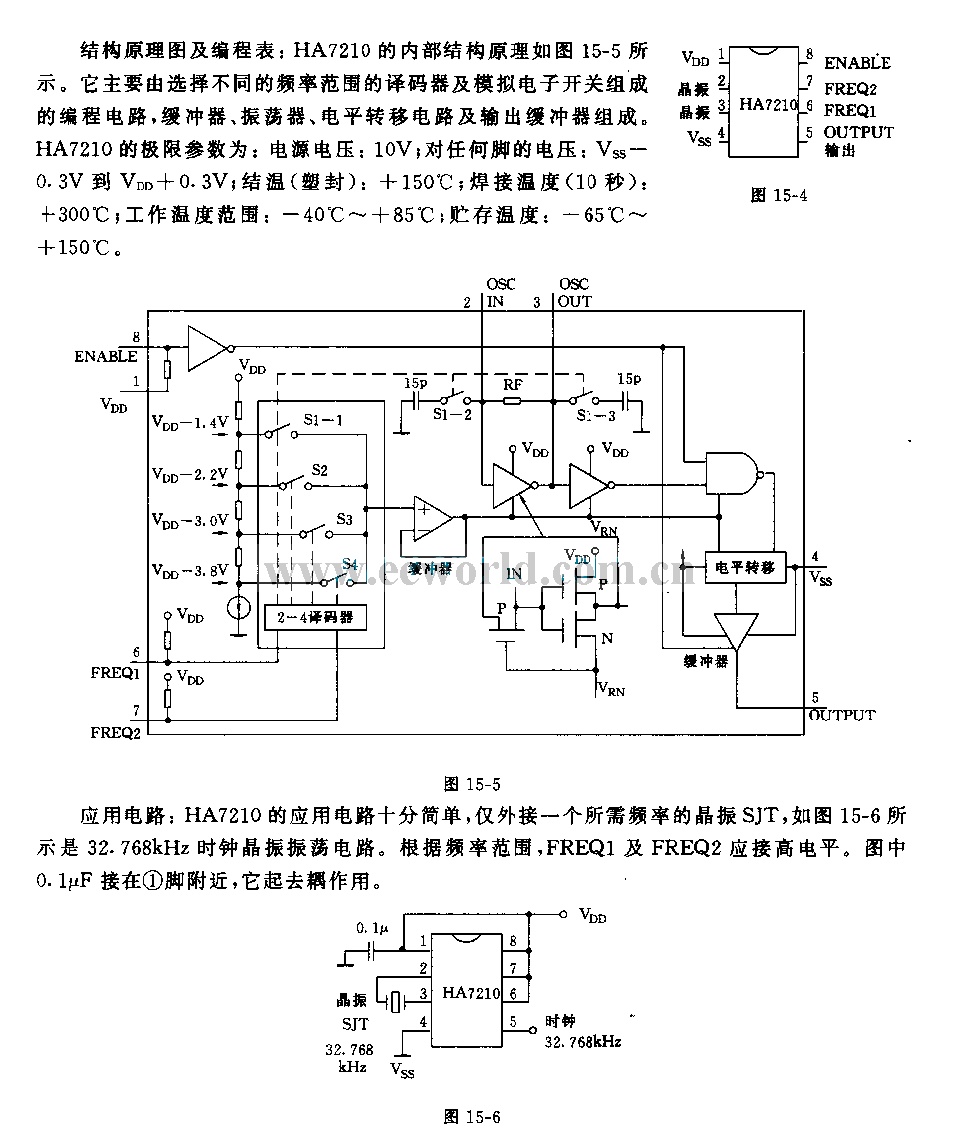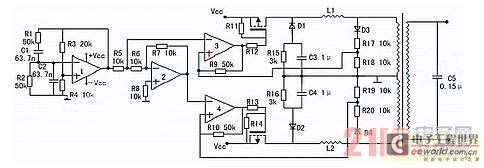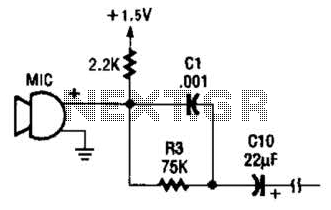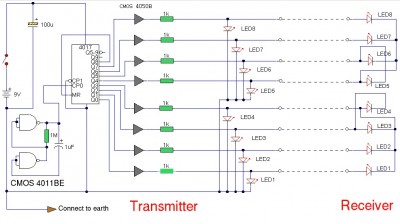
Weller WLC100 Electronic Soldering Station Circuit Q4012LPH
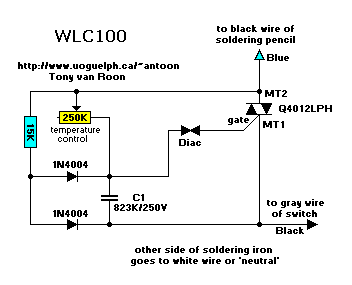
The following circuit illustrates the Weller WLC100 Electronic Soldering Station Circuit Diagram. This circuit utilizes the Q4012LPH Transistor. Features include safety measures, temperature control, and functionality as a soldering station that performs effectively for various applications. It is a simple circuit with an adjustable output ranging from 5 to 40 Watts, making it cost-effective. Components include a Transistor, Potentiometer, Resistor, Diode, and Capacitor.
The Weller WLC100 Electronic Soldering Station Circuit is designed to provide a reliable and adjustable soldering solution suitable for both amateur and professional use. At the core of the circuit is the Q4012LPH Transistor, which plays a crucial role in regulating the power output to the heating element. This transistor is chosen for its ability to handle the necessary current levels while maintaining thermal stability.
The circuit features a temperature control mechanism, which is essential for precision soldering tasks. This is achieved through a potentiometer that allows the user to adjust the output power. The adjustable range from 5 to 40 Watts ensures that the soldering station can accommodate various soldering needs, from delicate electronic components to heavier connections.
Safety features are integrated into the design to prevent overheating and potential damage to both the soldering station and the components being soldered. The circuit includes a diode that protects against reverse polarity and ensures that the current flows in the correct direction, safeguarding the sensitive components from damage.
Capacitors are employed in the circuit to smooth out voltage fluctuations, providing a stable power supply to the heating element. Resistors are also utilized to limit current flow and protect the circuit from excessive current that could lead to component failure.
Overall, the Weller WLC100 Electronic Soldering Station Circuit is a well-structured design that balances functionality, safety, and cost-effectiveness, making it an excellent choice for a wide array of soldering applications.The following circuit shows about Weller WLC100 Electronic Soldering Station Circuit Diagram. This circuit using the Q4012LPH Transistor. Features: for safety, temperature controlled, soldering station and works really well for most applications, simple circuit, output is adjustable from 5 to 40 Watts, cheap circuit. Component: Transis tor, Potentiometer, Resistor, Diode, Capacitor. [ sentex. net ] 🔗 External reference
The Weller WLC100 Electronic Soldering Station Circuit is designed to provide a reliable and adjustable soldering solution suitable for both amateur and professional use. At the core of the circuit is the Q4012LPH Transistor, which plays a crucial role in regulating the power output to the heating element. This transistor is chosen for its ability to handle the necessary current levels while maintaining thermal stability.
The circuit features a temperature control mechanism, which is essential for precision soldering tasks. This is achieved through a potentiometer that allows the user to adjust the output power. The adjustable range from 5 to 40 Watts ensures that the soldering station can accommodate various soldering needs, from delicate electronic components to heavier connections.
Safety features are integrated into the design to prevent overheating and potential damage to both the soldering station and the components being soldered. The circuit includes a diode that protects against reverse polarity and ensures that the current flows in the correct direction, safeguarding the sensitive components from damage.
Capacitors are employed in the circuit to smooth out voltage fluctuations, providing a stable power supply to the heating element. Resistors are also utilized to limit current flow and protect the circuit from excessive current that could lead to component failure.
Overall, the Weller WLC100 Electronic Soldering Station Circuit is a well-structured design that balances functionality, safety, and cost-effectiveness, making it an excellent choice for a wide array of soldering applications.The following circuit shows about Weller WLC100 Electronic Soldering Station Circuit Diagram. This circuit using the Q4012LPH Transistor. Features: for safety, temperature controlled, soldering station and works really well for most applications, simple circuit, output is adjustable from 5 to 40 Watts, cheap circuit. Component: Transis tor, Potentiometer, Resistor, Diode, Capacitor. [ sentex. net ] 🔗 External reference

